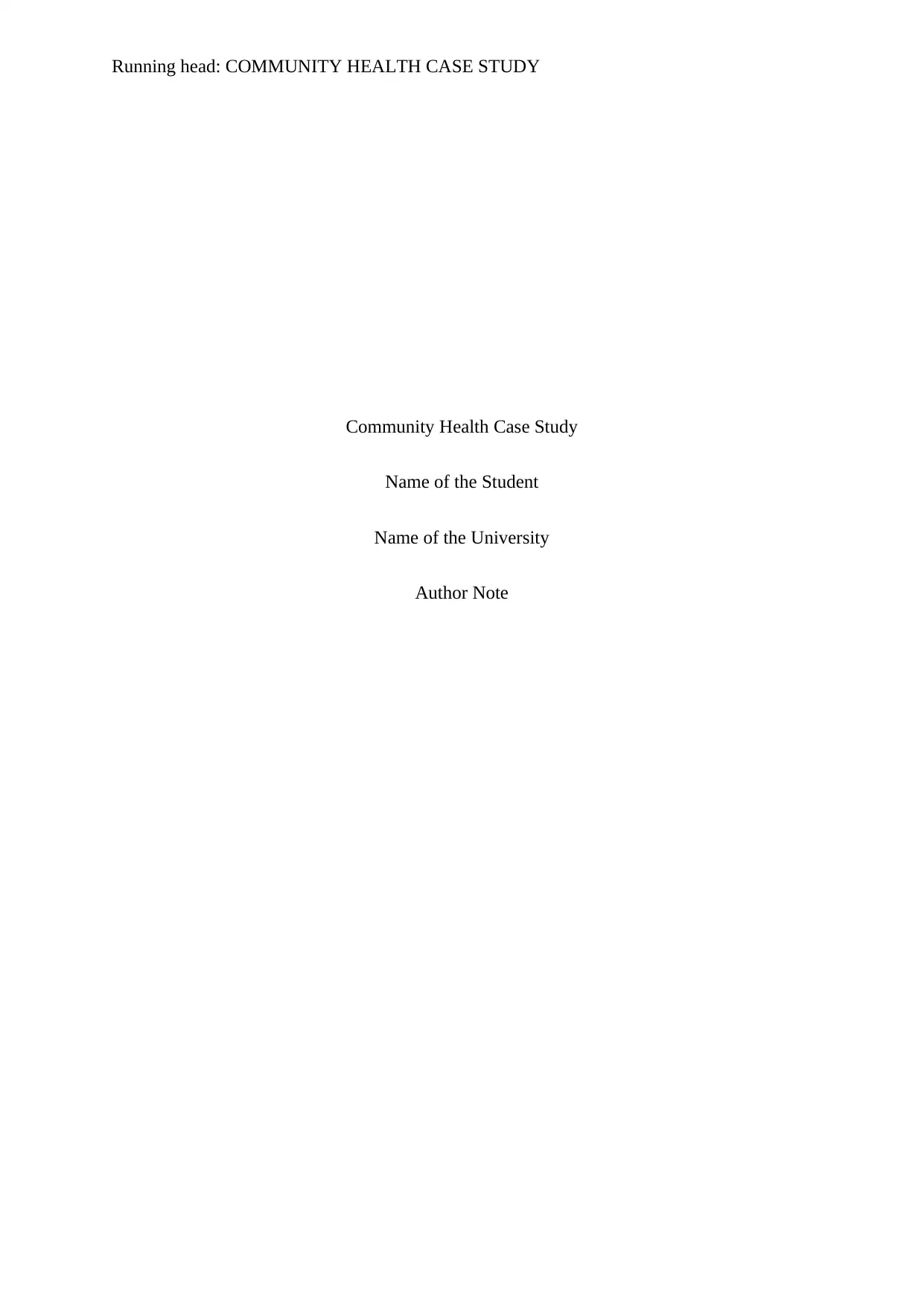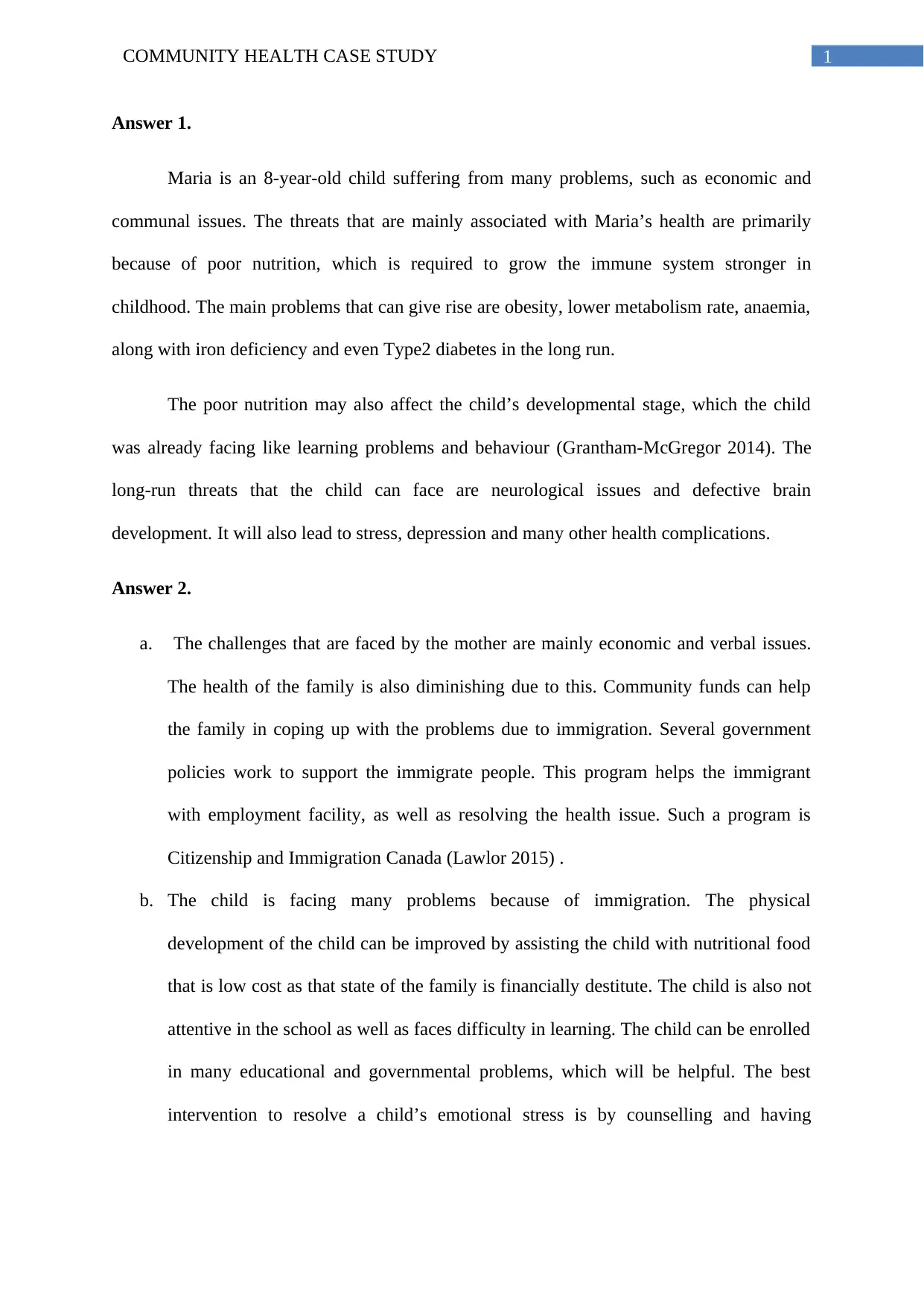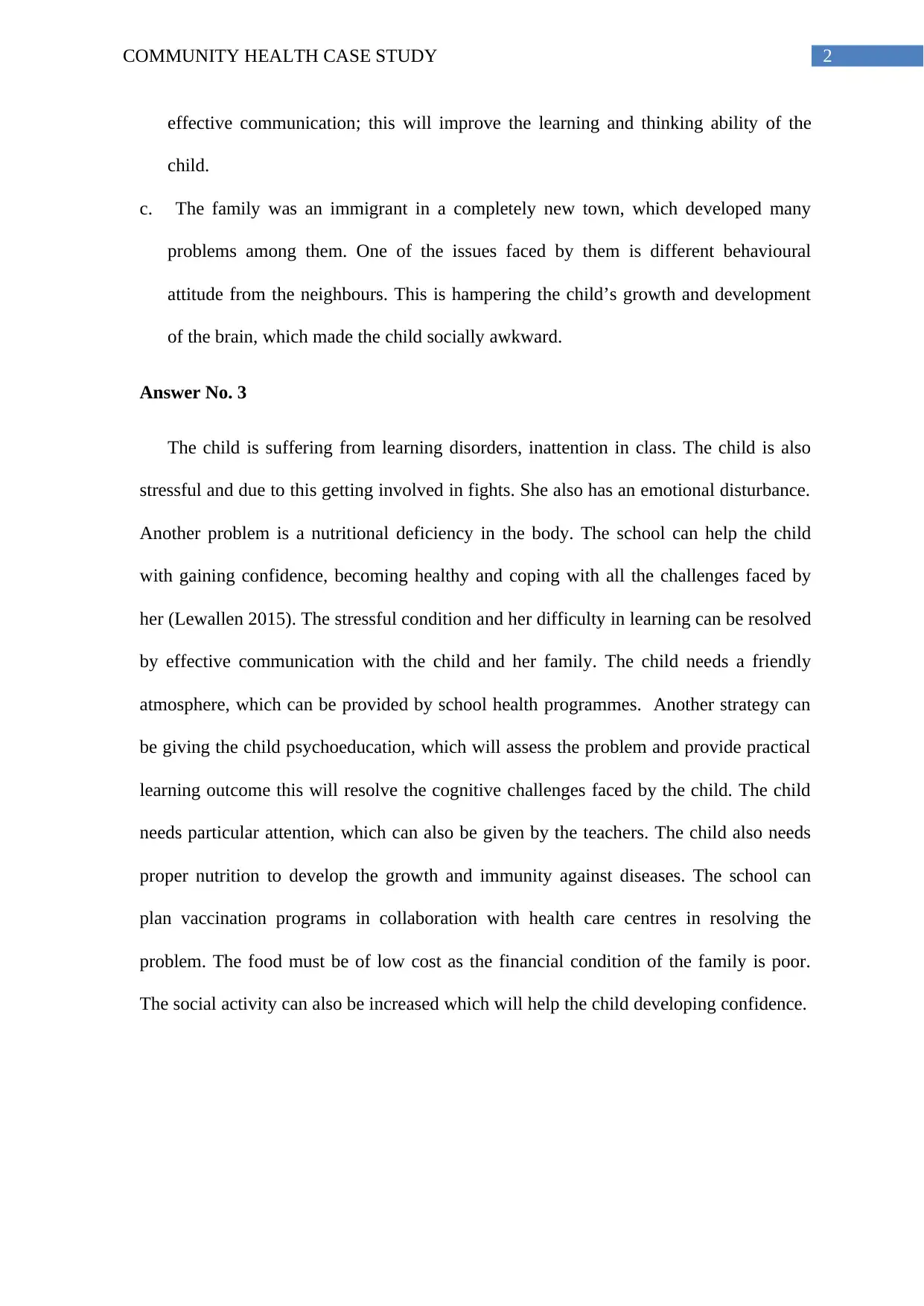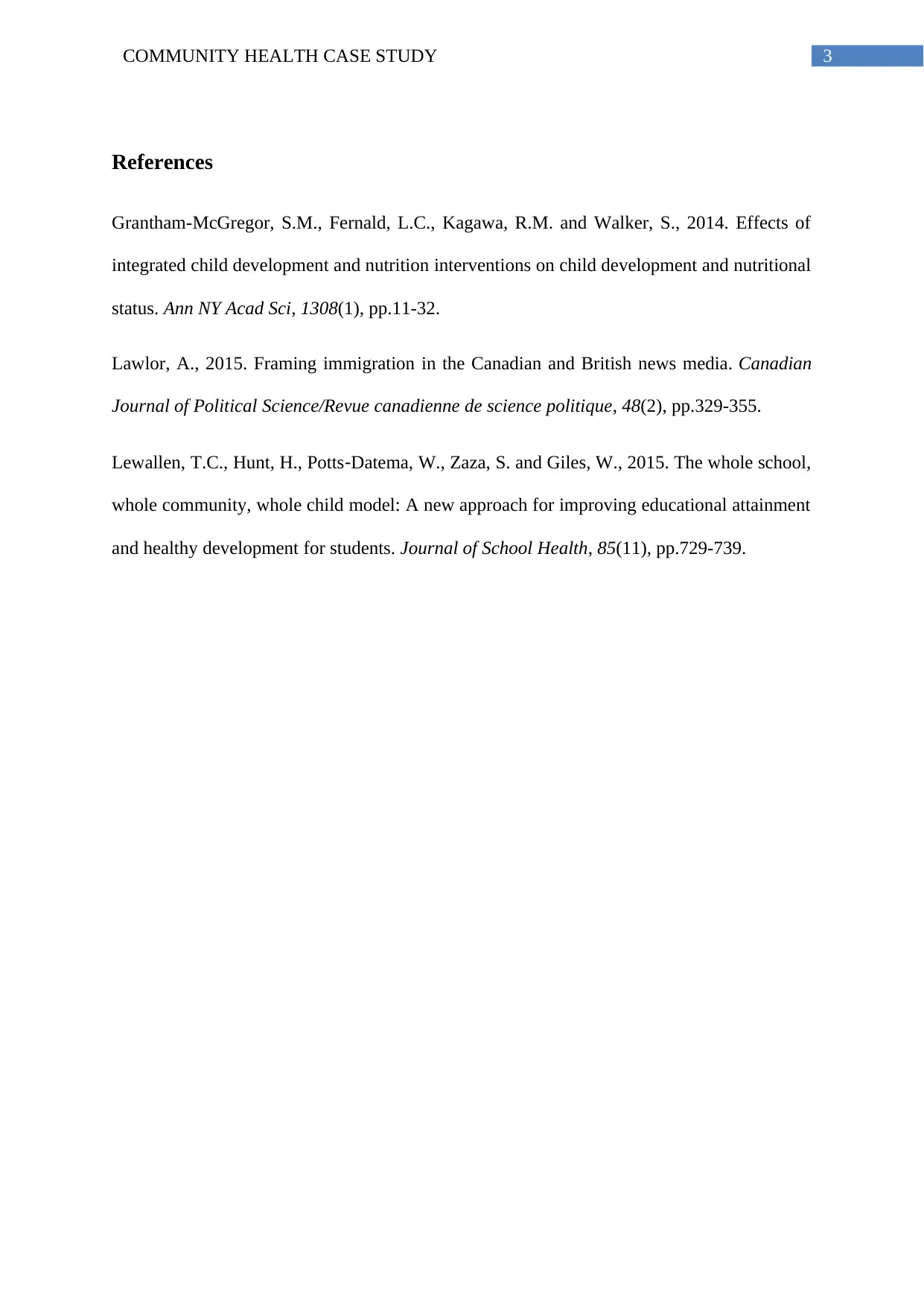Community Health Case Study: Analyzing Maria's Family's Problems
VerifiedAdded on 2022/08/09
|4
|771
|192
Case Study
AI Summary
This community health case study focuses on Maria, an 8-year-old girl living in Toronto with her mother and brother, who immigrated from Colombia. The family faces numerous challenges including financial difficulties, poor nutrition, and social isolation, stemming from the father's absence and the mother's stress and language barriers. The case study highlights the health consequences of these issues, such as Maria's nutritional deficiencies, learning difficulties, and emotional stress, as well as the mother's smoking habit and neighborhood violence. The assignment analyzes the impacts of these challenges on the family's overall well-being and explores potential interventions, including community support, educational programs, and improved nutrition to improve the family's health and social integration. The solutions provided address the specific health, economic, and social vulnerabilities the family experiences, emphasizing the need for tailored interventions to improve their quality of life.
1 out of 4











![[object Object]](/_next/static/media/star-bottom.7253800d.svg)